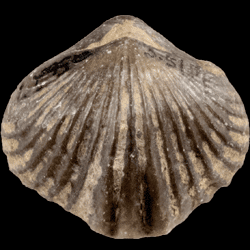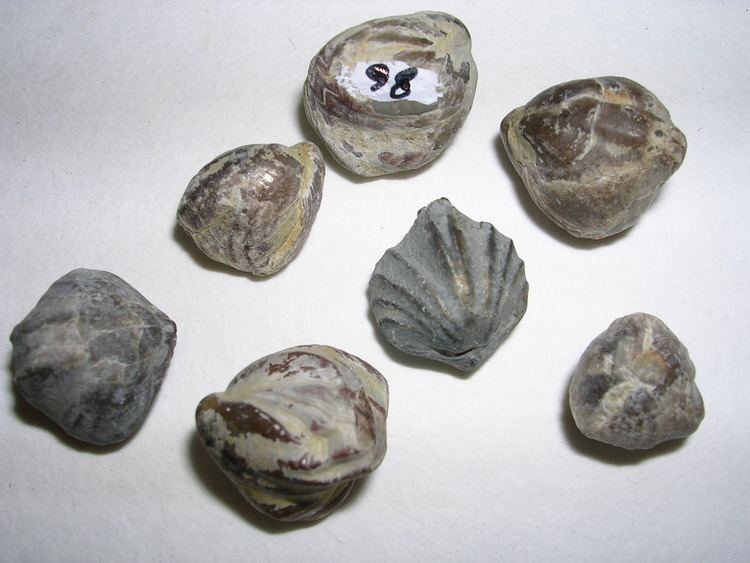Scientific name Rhynchonellida Rank Order | ||
 | ||
Similar Terebratulida, Spiriferida, Orthida, Strophomenida, Pentamerida | ||
Bapst combined analysis of extant rhynchonellida using morphological and molecular data
The taxonomic order Rhynchonellida is one of the two main groups of living articulate brachiopods, the other being the order Terebratulida. They are recognized by their strongly ribbed wedge-shaped or nut-like shells, and the very short hinge line.
Contents
- Bapst combined analysis of extant rhynchonellida using morphological and molecular data
- Rhynchonellida top 14 facts
- Classification
- References

The hinges come to a point, a superficial resemblance to many (phylogenetically unrelated) bivalve mollusk shells. The loss of the hinge line was an important evolutionary innovation, rhynchonellids being the first truly non-strophic shells with a purely internal articulation (teeth-sockets).

Strong radiating ribs are common in this group; and there are generally very strong plications or accordion-like folds on the sulcus (the long middle section) of the shell. This probably helps regulate the flow of water in and out of the shell. All rhynchonellids are biconvex (have a bulbous shell), and have a fold located in the brachial valve. This means that the commissure, the line between the two valves or shells, is zigzagged, a distinguishing characteristic of this group. The prominent beak of the pedicle valve usually overlaps that of the brachial valve, in order to allow the shell to open and close. There is usually a functional pedicle although the delthyrium may be partially closed.
Morphologically, the rhynchonellid has changed little since its appearance during the Ordovician period. It seems to have evolved from pentamerids, and in turn gave rise to the first atrypids and athyrids, both of which are characterized by the development of a complex spiral brachidium. Although much diminished by the terminal Paleozoic extinction, it experienced a revival during the Early Jurassic period, and became the most abundant of all brachiopods during the Mesozoic Era.
Rhynchonellida top 14 facts
Classification
This classification down to the level of genera is based on Kazlev and Emig.
Extant subgroups
Extinct Subgroups
